The Berkeley Arms is an architectural gem. It is a three storey stepped gabled building that dates back to about 1560. The first reference to the Berkeley Arms is in 1869. It is likely that the pub was trading as the Queens Arms before that date.
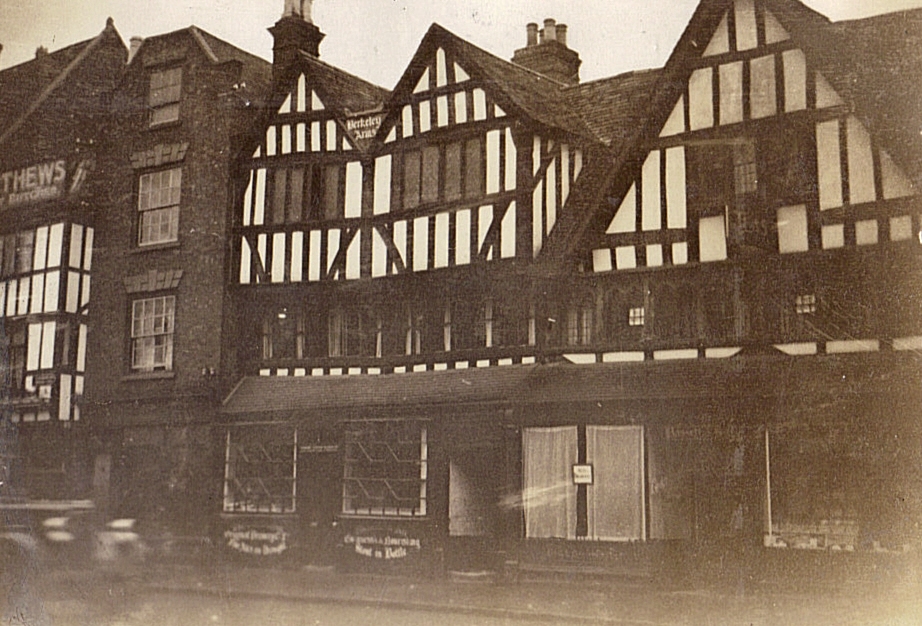
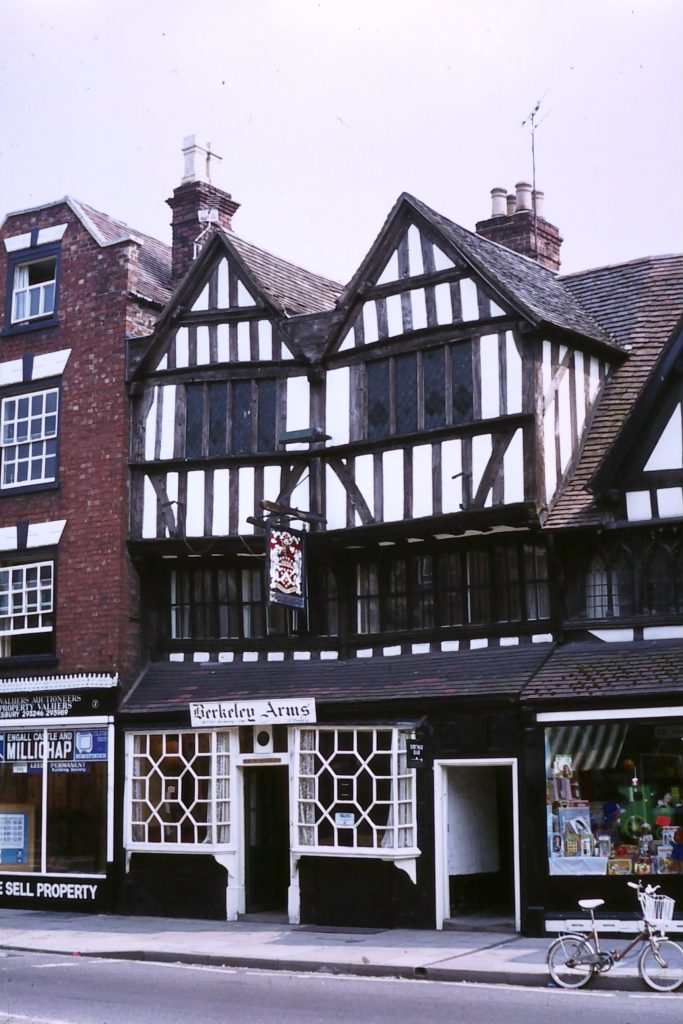
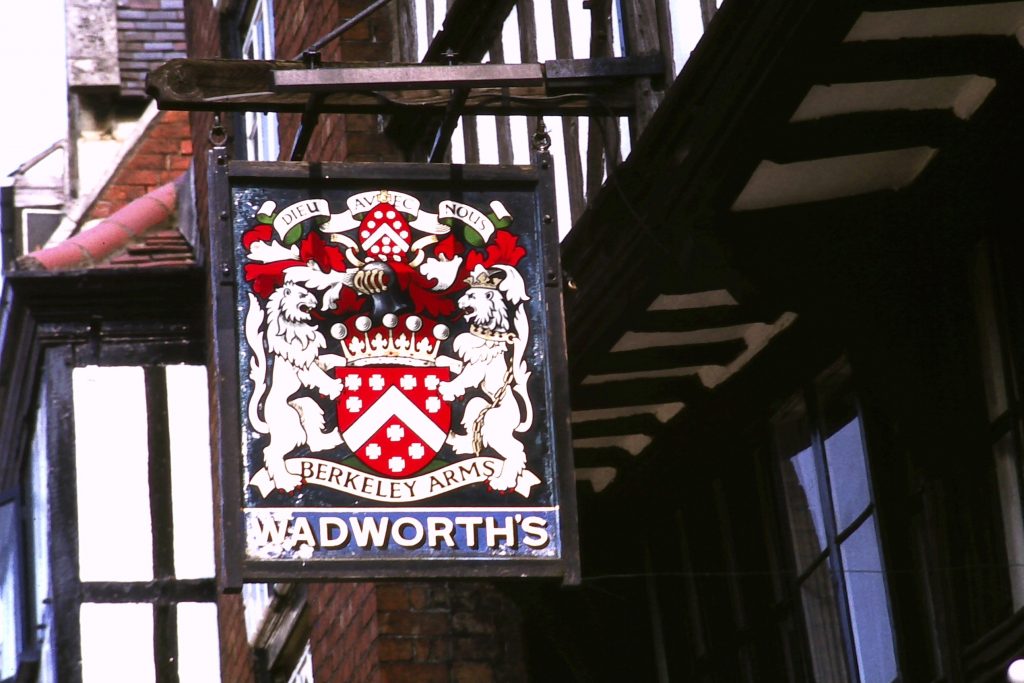
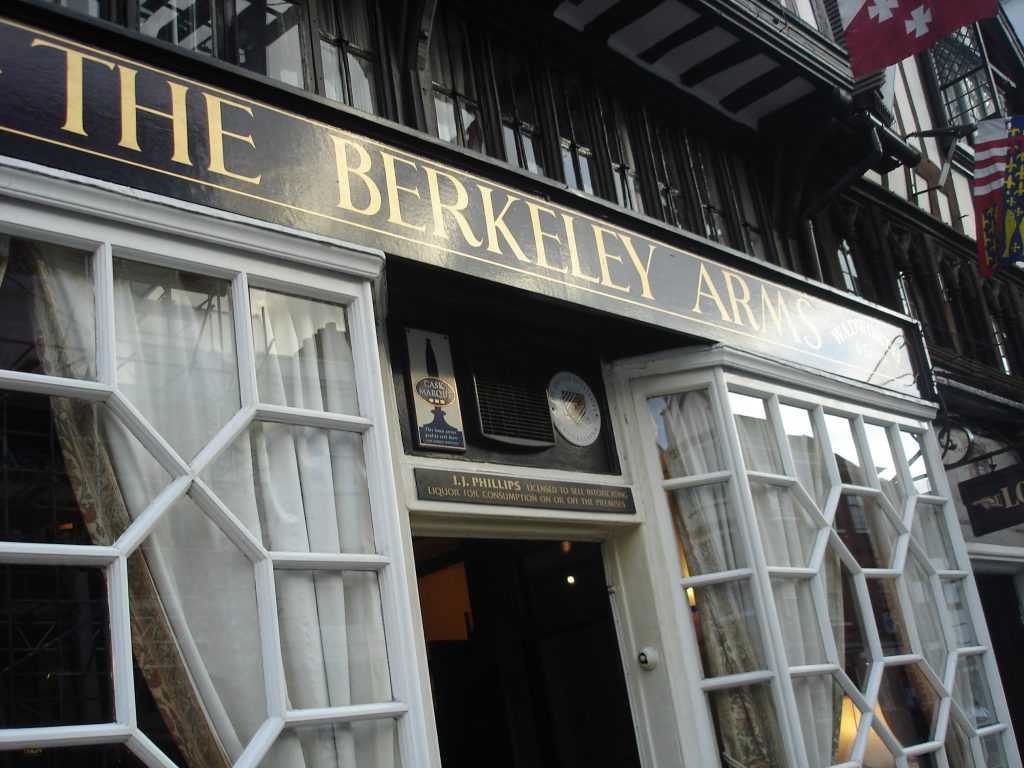
Gibson Kemp, the landlord in 2000, had a claim to fame. He took over from drummer Ringo Starr in the band Rory Storm and the Hurricanes when Ringo left to join the Beatles. During Gibson’s and his wife Tina’s tenancy at the Berkeley Arms they were convinced that the pub was being visited by a popular ex landlady, Ruby Jones, who had passed away in 1993. A barmaid was discussing the late landlady with a regular at the bar when six glasses flew off a 3 feet high shelf behind her and hit her on the legs. On another occasion the lights flickered when Ruby was brought up in conversation and the barmaid once felt someone or something push her in the back as if to move her out of the way but no one was there.
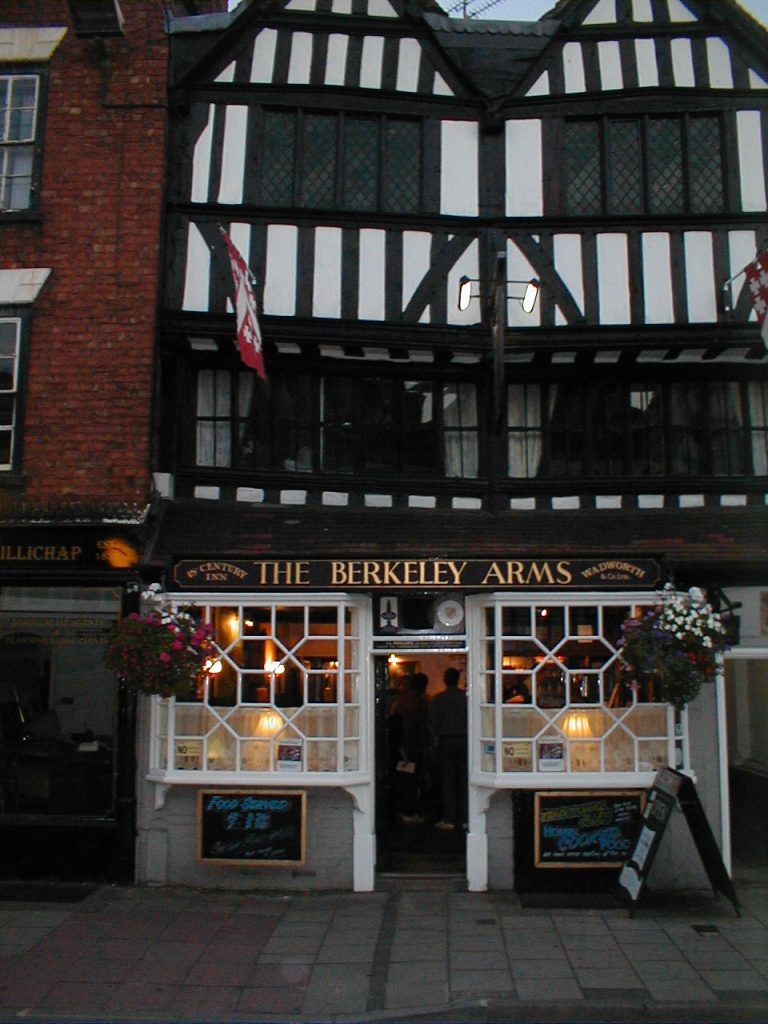
There are stories of hauntings and paranormal activity at the Berkeley Arms. The following article is from Gloucestershire and Avon Life, November 1975.
‘As far back as the 1880’s on cold winter evenings when the bar is quiet with few visitors, and the upper floors are temporarily vacant, it has been possible under certain conditions to hear the heavy tread of a person’s footsteps from the large front upper room, down the passageway which leads to the rear of the building. Visitors using the bathroom have also often remarked upon unusual ‘tapping’ noises echoing from above them – noises which the owners are unable to locate.
These manifestations – more the tapping than the footsteps – are most definitely the work of a poltergeist, a spirit notorious for making irritating, and sometimes frightening, bangs, crashes and knockings. Another favourite trick of the poltergeist is to move, and occasionally throw, inanimate objects, although no reports of this have ever been recorded at the Berkeley Arms.
At one o’clock one winter morning in 1969, Mrs Colin Putter, wife of the licensee at that time, was passing along the same corridor where the footsteps were heard, when ‘something’ flitted past her in the opposite direction. Unfortunately, no one was with her at the time but whether it was imagination, shadows or what, she was very shaken and frightened, and refused to use that part of the building ever again after dark.
One item which may – or may not – be relevant. At the top of the building there is a flight of stairs which until 1974, led to a plain brick wall. Then the wall was opened disclosing a small room. It was full of rubbish but two volumes of ‘The History of England’ published c.1820 were found in immaculate condition.
Perhaps the books were the proud possessions of the man whose heavy footsteps can still be heard walking along the passage. He may have wanted to preserve his prized volumes forever – in a room behind a wall. Could the ghost be that of a man looking for his treasured books or guarding them against meddling hands? Unfortunately there is very little evidence, as yet, to support what can be no more than guesswork. But perhaps one day someone will find the explanation of the haunting of the Berkeley Arms.’
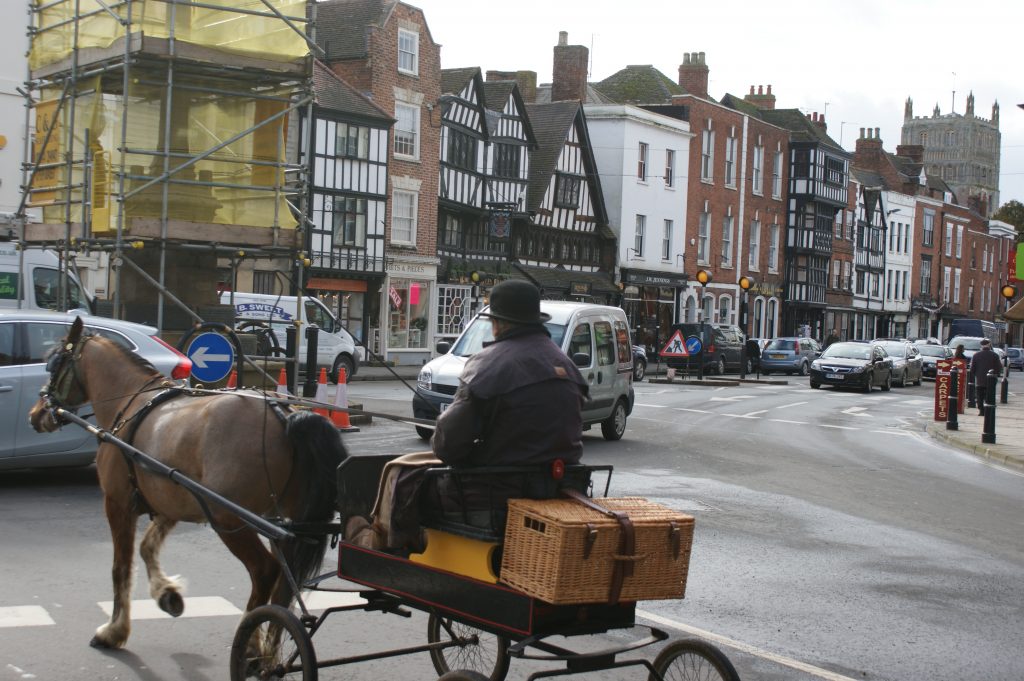
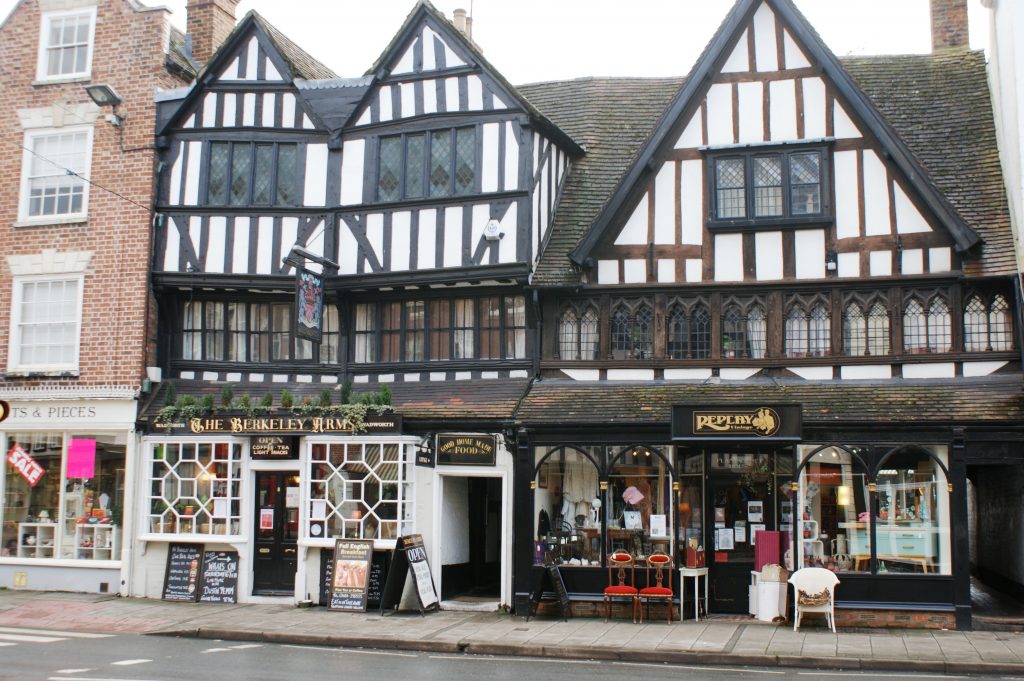
From ‘Tewkesbury Pubs’ by B.R. Linnell (1972, second edition 1996)
“Gules about a chevron argent ten crosses of the second patte”. This escutcheon is part of the full armorial bearings of the house of Berkeley. Long known as “Dr. Dee’s” this pub in Church Street has been marked, over the years, by the present hanging sign, a similar one nailed to the front of the house and, in the earliest photographs, a enormous panel across the full width of the building. The town guide says it is a 16th century shop front on a 15th century tavern. The ground floor front is more likely to be that of the 18th century.
In the 1980’s the unusually patterned frame and surround to the front windows was first reinforced with an iron backing which, as it proved unsuitable, was removed and the whole woodwork replaced. The rear of the house, particularly the barn, once used as a bacon and sausage preparation room and now (1996) a dining area, is probably c.1200, with stone brackets and massive timbers. The cellars are walled in stone and the massive chimney stack supports many of the timbers of the front of the house, which suggests a construction date, or renovation, for the house around mid-16th century.
A comparison between the Queens Arms of 1842 and the Berkeley Arms of 1942, both of which were/are in Church Street shows so many similarities that they must be the same house. The licensee of the former, Sam. Pearse, who was made bankrupt in 1843, had borrowed £2,000 on the value of the pub, a vast sum considering the times and the site. Thereafter no mention of the Queens Arms, but in 1849 Hathaway was the tenant of the Berkeley Arms, first licensed in 1869.
Before quantity replaced quality the ‘Berkeley’ was a darkly comfortable place of dim corners, tall oak settles and a tiny glassed-off snug which had a fire.
On the old bar to the left of the front door there was usually a cold joint, bread, and, most days a steaming pot of faggots and peas. These were reminders that more most of its working life the main trade of the house was in meat. Pigs fattened on Perry hill were killed, cured and turned into brawns, sausages and pies on the premises until the 1930’s. Thereafter the trend was towards bar and away from butchery. The house was also an official stop-over for the Cyclists’ Touring Club. In those days the customers wore cloth caps and art silk mufflers – both sexes – and drank cider or stout. In one evening, long to be remembered, the writer and two dozen happy folk emptied nine and a half pins of cider (342 pints). [edit – that equates to over 13 and a half pints of cider each!!]. Today the cider trade is limited to a few bottles daily. The Berkeley has adapted to survive.
On winter evenings the bar is sometimes empty but for the potman and a single drinker. Then, if your ears are keen, you may hear the slow tread of footsteps across the empty room above and on down the passage. Perhaps he was/is heading for the boarded up room at the back. When this was opened up in the 1980’s it was found to be several feet deep in early 19th century books. This mirrored a clear-out of cupboards in 1896 when various deeds, wills and other documents relating to the ‘Queens Arms’ and ‘Quart Pot’ were found. Reverting to ghostly footsteps, one foggy evening in winter the writer was alone in the back bar with the landlord when brisk footsteps were heard coming up the passage from the street to the door of the back bar, where they stopped. We both eyed the door to see – nothing, but no-one entered. After a long moment one of us opened the door to see – nothing.
Landlords tended to be very individualistic, probably because, as owners, they were free to do as they pleased. Amos Webb always nailed an oak bough over the door on Oak Apple Day. At one time he also owned the bakery next door. The doorframe of the connecting door is visible by the fireplace. His grandsons Frank and Harry and Harry’s housekeeper Annie were a rare trio. The two brothers were co-owners and ran the place for thirty years without exchanging a word. “Summat to do with a ‘oman’ ” it was said. When Harry died, after a long and peaceful retirement, he left his whole estate to Annie, who was also enjoying retirement in a nice little home in Malvern. She had certainly earned every penny. From 1916, when she arrived from Ireland as Miss Annie Malone – a fugitive from the ‘troubles’ ? – until she retired in 1963 this tiny woman kept house for Harry, cooking, cleaning, shopping and washing as well as scrubbing down every wooden surface in the bars nightly, including the floors. From a very pretty nineteen year old to a bird-like 80’s plus she earned all she got. Whether there was anything between her and Harry will never be known. She kept up visits to Frank’s wife until she died. She was well into her eighties when she died but fate has a post-script to her story. About 1983 the then landlord received a large buff envelope addressed to Miss A. Malone. Annie had come up big on the Premium Bond Draw. Which raises the question of what happened to her estate?
A series of short-term tenants in the sixties depressed the fortune of the house leading to speculation that it might close. Some structural improvements were made, including a new floor in the bar which entailed the removal of seven layers of floorboards. After 1969, under the successive tenancies of Phil and Ruby Jones the pub regained all it’s former popularity. When that landlady died in 1992* (sic) the event achieved overnight what a century of temperance activity had failed to do- closed pubs and an over-flowing congregation in the Abbey.
https://www.wadworth.co.uk/find-a-pub/berkeley-arms-tewksbury
Licensing Details:
Owner in 1891: Cheltenham Original Brewery
Rateable value in 1891: £18.0s.0d.
Type of licence in 1891: Beerhouse
Owner in 1903: Cheltenham Original Brewery
Rateable value in 1903: £24.0s.0d.
Type of licence in 1903: Beerhouse
Closing time in 1903: 11pm
Owner in 2008,2022: Wadworth & Co., Brewers, Devizes
Landlords at the Berkeley Arms include:
1849 Hathaway
1863-1893 Amos Webb
1893-1906 William H. Dee
1906-1933 Mary Ann Dee
1933-1963 Frank Dee
1963-1964 Frederick Turner
1964-1965 Paul Blaaser
1965-1966 John Chandler
1966-1967 Herbert Birch
1967-1968 Kenneth Jones
1968 Frederick Adamson
1968-1969 Colin Rutter
1969-1975 Philip Jones
1975-1993 Philip and Ruby Jones (*Ruby died in August 1993)
1992 Peter & Elizabeth Thorn
1997 Kevin and Debbie Thomas
2000,2001 Gibson and Tina Kemp
2006 Ian Phillips

